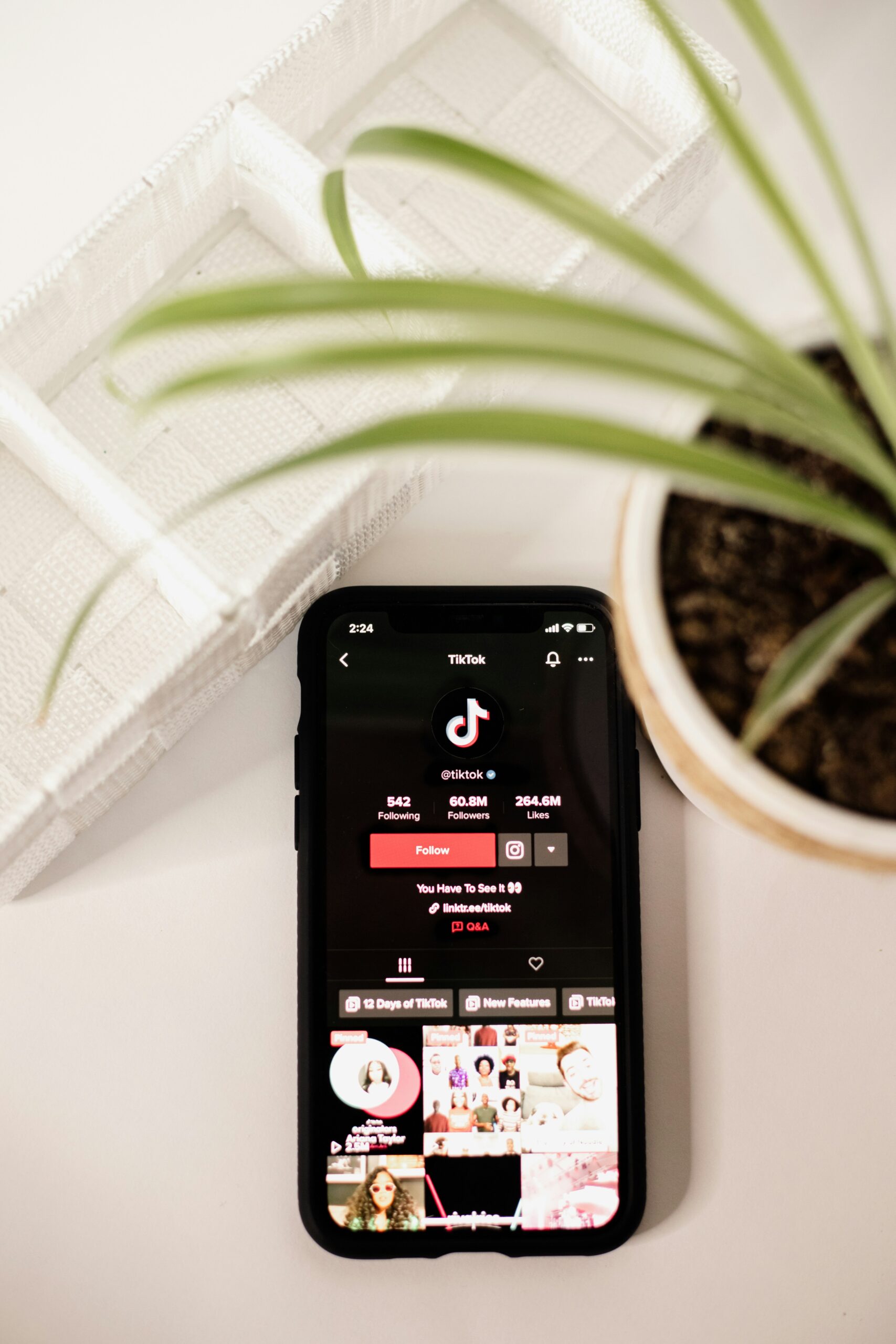The TikTok Phenomenon
TikTok, a short-form video-sharing social media platform, emerged on the digital scene in September 2016, initially under the name Douyin in China and later rebranded as TikTok for international markets in 2018. Since its inception, it has experienced a meteoric rise in popularity, capturing the attention of millions across the globe. With its innovative format that allows users to create and share 15-second to three-minute videos, TikTok has revolutionized content creation, making it more accessible to users of all ages and backgrounds.
This platform’s success can be attributed to its unique algorithm, which curates content based on individual user preferences and encourages engagement through interactive features such as challenges, duet videos, and hashtags. Consequently, TikTok has become a cultural sensation, giving rise to trends that often spill over into mainstream media. Dance routines, skits, and lip-syncing videos have not only engaged users but have also influenced music charts and advertising strategies. Brands have increasingly turned to TikTok to connect with their target audience, acknowledging its potential for virality and brand promotion.
The significance of TikTok’s presence in app stores cannot be overstated. As one of the most downloaded applications globally, it plays a crucial role in shaping the social media landscape. Users can access diverse content, express creativity, and connect with others, fostering a sense of community. Moreover, the availability of TikTok in app stores reflects the evolving nature of entertainment, where traditional methods of content consumption are challenged by new, engaging formats. As TikTok continues to adapt and evolve, understanding its impact on users and society becomes increasingly essential.
Understanding TikTok’s Backstory
TikTok, the short-form video platform, has captured the attention of millions globally. Yet, its ascent was not without significant challenges and controversies. Key among these were data privacy issues that raised alarms regarding user information handling. In 2020, various governments scrutinized TikTok, primarily focusing on concerns that Chinese authorities could access user data, alongside fears of potential espionage. These apprehensions prompted countries, including India and the United States, to voice their motivations for banning the app, citing national security reasons.
India was one of the first major countries to impose a ban on TikTok, positioning it as a response to border skirmishes with China and citing the app’s risks to user privacy. In June 2020, the Indian government officially prohibited TikTok and 58 other Chinese applications, stating that they posed threats to the country’s sovereignty and security. Following India’s lead, the United States expressed similar concerns, particularly during the administration of former President Donald Trump. The administration issued executive orders aiming to prohibit TikTok, arguing that data collected from American users could be accessed by the Chinese government.
In response to these escalating tensions and scrutiny, TikTok initiated several measures to alleviate fears surrounding its data practices. The platform promised greater transparency and moved to establish data centers in regions like the United States and Europe to store user information securely. However, these efforts were met with mixed reactions. Despite attempts to improve its public perception, TikTok continued to face challenges and debate over its influence and operations, leading to its temporary removal from app stores in some regions. Now, as TikTok returns to the app store, it faces the critical challenge of rebuilding trust with users and governments alike, while navigating a landscape shaped by heightened privacy concerns and regulatory pressures.
The Journey Back to the App Store
The journey of TikTok’s re-acceptance into various app stores has been marked by a series of negotiations and regulatory adjustments aimed at addressing prior concerns that led to its initial removal. Originally, TikTok faced significant scrutiny regarding its data privacy practices and potential security vulnerabilities. In response to mounting pressure from governments and regulatory bodies, the app embarked on a comprehensive effort to enhance its transparency and compliance mechanisms.
In the lead-up to its reinstatement, TikTok engaged in dialogue with officials and stakeholders to discuss regulatory requirements. This included outlining new measures for protecting user data, implementing rigorous content moderation policies, and establishing clearer communication channels for users to report violations. The platform also committed to hosting data within the regions where it operates, a significant move intended to minimize concerns regarding cross-border data flows.
The timeline of TikTok’s return to the app stores spanned several months, during which the app made notable improvements. Key milestones included the hiring of experts in data security, the development of an independent oversight board, and the introduction of new privacy settings that gave users greater control over their information. These enhancements played a crucial role in restoring trust among users and regulators alike.
Following its efforts, TikTok was gradually reintroduced into app stores across various regions, marking the end of its temporary exclusion. This reinstatement not only allowed TikTok to recover from its initial setback but also demonstrated the company’s commitment to addressing the regulatory challenges it faced. As a result, TikTok stands better positioned to navigate future regulations and maintain a responsible operating environment for its users.
Ownership Insights
TikTok has emerged as a significant player in the social media landscape, and understanding its ownership structure is essential to grasp its operations and relations with various authorities. At the helm of TikTok is its parent company, ByteDance, which was founded in 2012 by Zhang Yiming, a Chinese entrepreneur. ByteDance has established itself as a technology powerhouse, focusing on artificial intelligence and content distribution. In recent years, it has expanded its portfolio, notably acquiring Musical.ly in 2018, which facilitated TikTok’s reach into Western markets.
The ownership structure of TikTok has attracted considerable attention, especially given the app’s growing user base and the geopolitical context surrounding it. ByteDance, based in Beijing, consciously approaches its operations in different countries while navigating local regulations. The scrutiny by governmental entities regarding data privacy and security has prompted discussions about potential divestment or restructuring of ownership. For example, various U.S. lawmakers have raised concerns about the implications of Chinese ownership of an app widely used by American citizens. This pressure has sparked dialogues on possible changes in its management and operational framework.
Furthermore, recent investments and partnerships have also reflected the complexities of ownership and governance in the tech sector. ByteDance has sought to reassure users and regulators through collaborations and strategic alignments with local firms, showcasing its commitment to transparency and compliance with regional laws. This dynamic touches on the broader implications of how ownership influences TikTok’s content moderation policies, user data privacy, and overall platform accountability.
As TikTok navigates through changing global landscapes and regulatory challenges, the focal point on ByteDance’s ownership will remain crucial in understanding future developments within the app and its relationship with both users and governments.
Impacts of TikTok’s Return
The return of TikTok to the app store signifies a momentous shift in the social media landscape, yielding various implications for users, content creators, and competitors alike. With TikTok reinstated, users regain access to a diverse array of short-form video content that has significantly influenced digital trends. This accessibility is expected to enhance user engagement, as established and new users alike will gravitate towards the platform’s innovative features and viral potential, rekindling their active participation in content consumption and creation.
Moreover, the revival of TikTok encourages its creators to unleash their creativity, providing a renewed opportunity to gain visibility and monetize their efforts. The platform is known for its unique algorithms that effectively promote content based on user behavior, which can lead to increased followers and brand partnerships. As the TikTok community reemerges, creators are likely to experience an uptick in engagement on their posts, enhancing their online presence across the social media ecosystem.
From a competitive standpoint, TikTok’s return poses challenges to rival platforms. Social media giants like Instagram and YouTube must respond to TikTok’s resurgence by innovating and enhancing their features to retain user interest. As users flock back to TikTok, these platforms may experience shifts in their user demographics and engagement metrics. TikTok’s distinctive editing tools and user-friendly interface have set a benchmark in short-form video content, pushing competitors to refine their offerings. Consequently, with TikTok’s revival, the dynamics among social media platforms will likely change, emphasizing the need for continuous adaptation to user preferences.
In conclusion, TikTok’s return to the app store not only revitalizes engagement among users and creators but also reshapes the competitive landscape of social media platforms. As engagement levels rise, it will be crucial for all parties involved to navigate this evolving environment strategically.
Future of TikTok: Predictions for 2025
As we look ahead to 2025, it is clear that TikTok is poised to continue its influence on the social media landscape. The platform has grown exponentially since its launch, capturing the attention of millions with its short-form video format. One key prediction is that TikTok will enhance its user engagement through innovative features that leverage emerging technologies such as augmented reality (AR) and artificial intelligence (AI). This could lead to a more immersive user experience, where content creation becomes more interactive and personalized, allowing users to engage in ways previously thought impossible.
Furthermore, as social media evolves, TikTok is likely to adopt advanced algorithms that enhance content discoverability. This could involve harnessing machine learning capabilities to tailor user feeds even more precisely to individual preferences. Such advancements would not only strengthen user retention but also attract new demographics, creating a more diverse user base. Brands may also capitalize on this by developing targeted advertising strategies, which would yield higher conversion rates than traditional marketing methods.
However, with these opportunities come challenges. As TikTok continues to expand, it may face increased scrutiny from regulatory bodies concerning data privacy and user safety. Furthermore, competitors such as Instagram and YouTube are investing heavily in short-form content, which could threaten TikTok’s dominance. To maintain its competitive edge, TikTok will need to innovate continuously while addressing these regulatory concerns effectively. This strategy could cement its status as a leading platform in a shifting landscape.
In conclusion, TikTok’s trajectory through 2025 will likely be shaped by technological advancements, evolving user expectations, and market dynamics. By strategically navigating these factors, TikTok has the potential to not only sustain its growth but also redefine how users interact with social media content.
Apple’s Role in TikTok’s Return
Apple’s involvement in the app ecosystem is pivotal, notably concerning widely used applications such as TikTok. Following a period of scrutiny and regulatory concern, TikTok’s presence in the App Store has lingered in uncertainty, prompting interested parties to examine Apple’s policies regarding app submissions and its potential impact on the app’s reinstatement.
One of the primary elements of Apple’s app submission process is its stringent adherence to guidelines that govern privacy, security, and content appropriateness. These guidelines are designed to ensure a safe environment for all users. TikTok, being a platform that aggregates vast amounts of user-generated content, has faced challenges relating to data privacy and user safety, particularly regarding younger demographics. Consequently, Apple may have required TikTok to implement more robust safeguards to protect user data before permitting its return to the App Store.
Furthermore, Apple’s public position on content moderation and compliance with local regulations may influence how apps like TikTok operate within its ecosystem. The company has issued statements reinforcing its commitment to user privacy and its expectations for app developers to comply with such standards. As TikTok navigates these challenges, any adjustments or compliance measures undertaken by the social media platform could directly correlate with Apple’s readiness to approve its re-entry into the App Store.
The relationship between Apple and TikTok thus represents a complex interplay of corporate responsibility, compliance with privacy laws, and user safety. With potential reforms in TikTok’s operational framework, the pathway toward regaining access to Apple’s vast user base may become clearer. If TikTok can align its practices with Apple’s guidelines, the collaboration could significantly benefit both parties moving forward.
Public and Government Reactions
The return of TikTok to the app store has elicited a wide array of reactions from both the public and governmental agencies, reflecting concerns centered on data privacy and security. Many users and creators welcomed the app’s reintroduction, expressing relief that they could once again engage with a platform that has rapidly become a significant medium for self-expression and creativity. TikTok’s vast ecosystem of influencers and content creators highlighted the importance of the platform for their income and online presence, indicating that for many, TikTok is an essential tool for their work.
Despite the enthusiasm from the user base, there remains a palpable sense of skepticism, particularly regarding data handling practices. Concerns about data privacy have been at the forefront of discussions, especially after previous scrutiny surrounding TikTok’s alleged mishandling of user data and potential ties to foreign governments. Various community forums and discussions on social media platforms reflect a cautious optimism, where users hope that the company has implemented more robust security measures to protect their information from unauthorized access.
On the governmental side, reactions have been more measured. Several regulatory bodies continue to monitor the app closely, with mixed sentiments. While some officials have acknowledged the importance of personal choice and innovation in the technology sector, others maintain stringent scrutiny, emphasizing the need for compliance with data protection regulations. Reports suggest that agencies are considering establishing clearer guidelines to ensure user safety while balancing the app’s market presence. As governmental agencies engage in dialogue with TikTok representatives, the tech community is advised to stay alert, recognizing that any new developments could significantly influence user experiences on the platform. This dynamic interplay between public sentiment and governmental oversight forms a critical backdrop to TikTok’s reestablished presence in the app stores, shaping future interactions within the digital landscape.
Conclusion: The Road Ahead for TikTok
As TikTok rejoins the App Store, it marks not only a pivotal moment for the application but also highlights the intricate interplay between technology, regulation, and social media dynamics. This development underscores the importance of understanding the regulatory landscape that shaped TikTok’s past challenges and its eventual return. The lessons gleaned from these experiences are invaluable for both the platform and its users.
One significant takeaway is the necessity for adaptability. TikTok has demonstrated resilience in navigating the complexities of legal and geopolitical pressures. This adaptability will likely play a crucial role in shaping its future strategies, ensuring compliance with varying regulations across different regions. The app’s management may focus on transparency and user data protection to build trust, especially among users who may be wary of privacy issues stemming from past controversies.
Furthermore, TikTok’s return signifies an opportunity to innovate its content moderation policies, balancing the freedom of expression with the need for a safe online environment. As the platform grows, the potential for tailored content and enhanced user interaction will be critical in maintaining engagement and user satisfaction. Continuous improvement in user experience, alongside robust safety measures, will be essential in securing TikTok’s position in a competitive market.
In this evolving landscape, understanding user preferences and fostering a community that values diversity and creativity will be important. As TikTok moves forward, the platform must remain vigilant in monitoring trends and adapting to user needs. Ultimately, the road ahead for TikTok is filled with both challenges and opportunities, and how it addresses these will determine its long-term success and influence in the social media realm.



